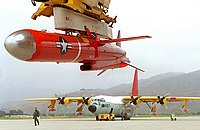History of unmanned aerial vehicles

Unmanned Aerial Vehicles (UAVs), also known as drones, are these flying machines that don’t have a pilot inside. They are controlled by people on the ground using special remote control instruments, typically joysticks and buttons, which are like the ones you might use to play a video game or fly a small remote control helicopter.
But did you know that the idea of unmanned aerial vehicles actually started a loooong time ago, even before airplanes were invented? One of the earliest ideas of an unmanned aerial vehicle dates back to the 1840s, when a man named John Stringfellow built a small steam-powered model airplane that was actually successful in launching itself into the sky.
Fast forward to the 20th century, the first practical use of unmanned aerial vehicles was during World War I, when both the British and the Germans used them for surveillance purposes. These early drones, however, were pretty basic and could only fly for short distances.
Flash forward again to the 21st century - drones have become much more advanced and are now used for many different reasons. They can be used to monitor crops on farms, to survey environmental disasters, to deliver packages, to capture stunning aerial footage for movies and TV shows, and even to help police and firefighters in emergency situations.
And that’s the history of unmanned aerial vehicles, or drones, in a nutshell!
But did you know that the idea of unmanned aerial vehicles actually started a loooong time ago, even before airplanes were invented? One of the earliest ideas of an unmanned aerial vehicle dates back to the 1840s, when a man named John Stringfellow built a small steam-powered model airplane that was actually successful in launching itself into the sky.
Fast forward to the 20th century, the first practical use of unmanned aerial vehicles was during World War I, when both the British and the Germans used them for surveillance purposes. These early drones, however, were pretty basic and could only fly for short distances.
Flash forward again to the 21st century - drones have become much more advanced and are now used for many different reasons. They can be used to monitor crops on farms, to survey environmental disasters, to deliver packages, to capture stunning aerial footage for movies and TV shows, and even to help police and firefighters in emergency situations.
And that’s the history of unmanned aerial vehicles, or drones, in a nutshell!
Related topics others have asked about:
